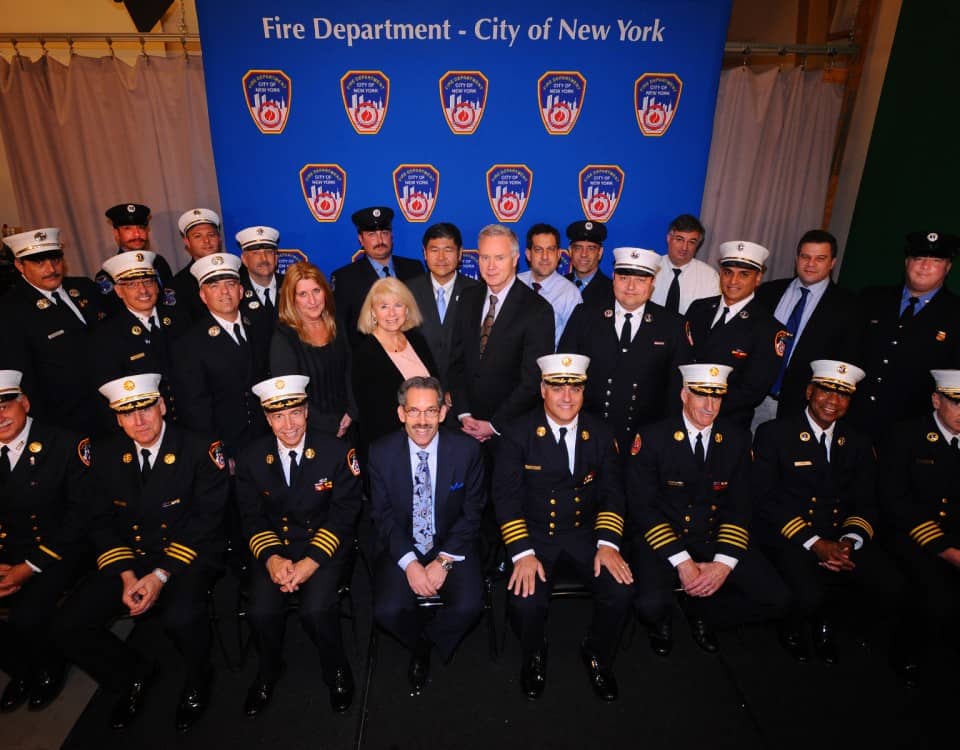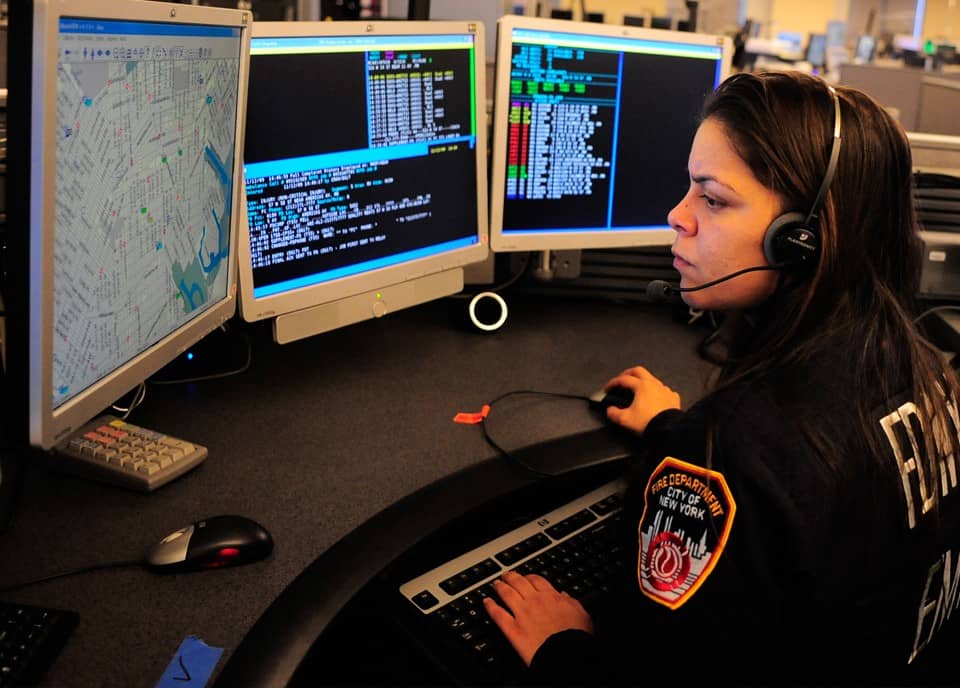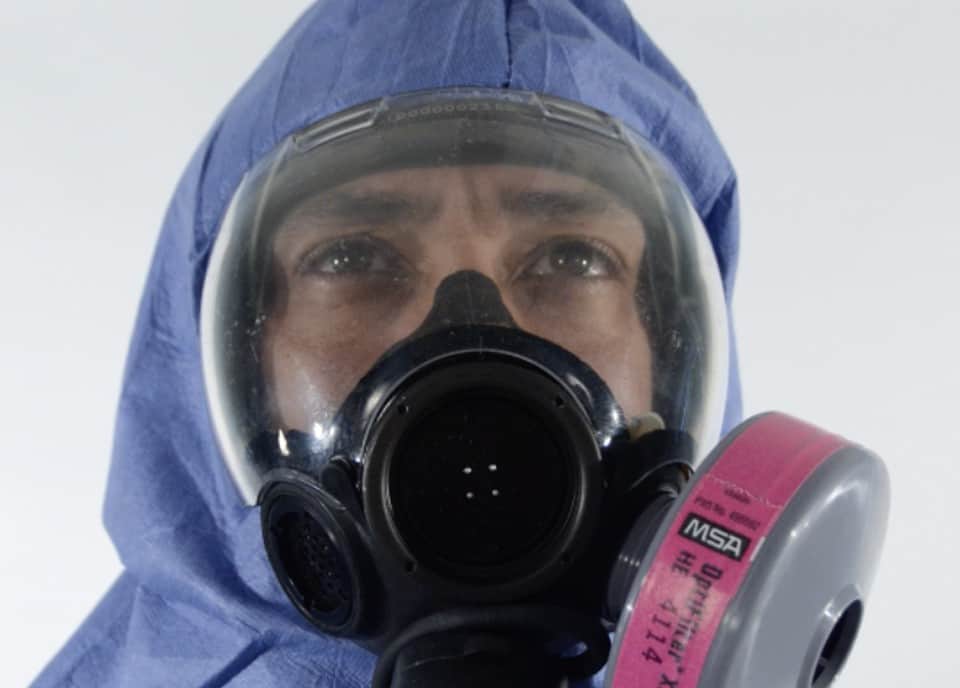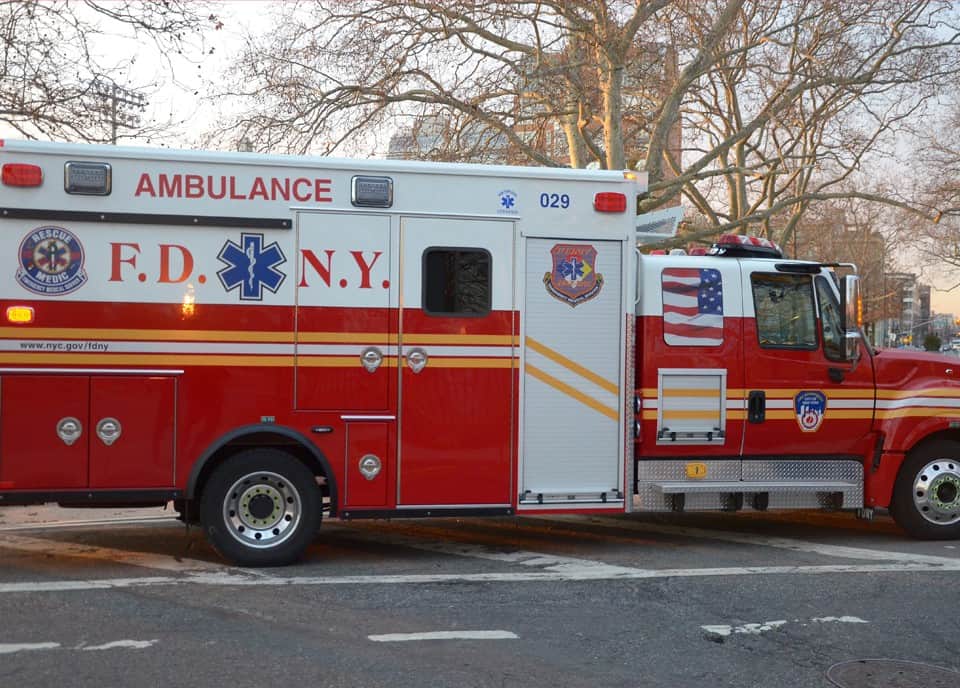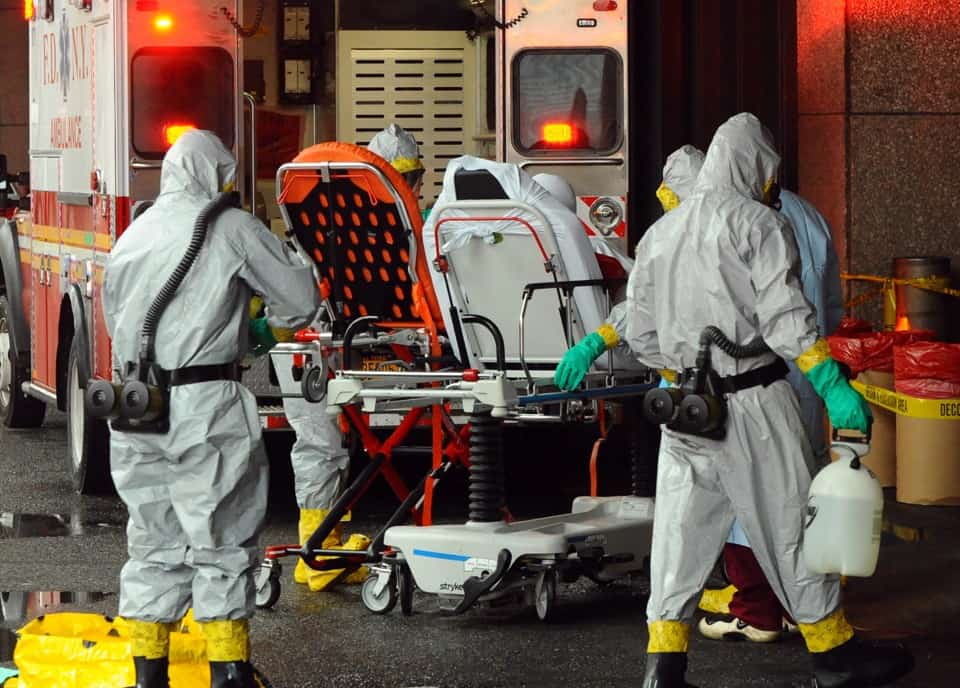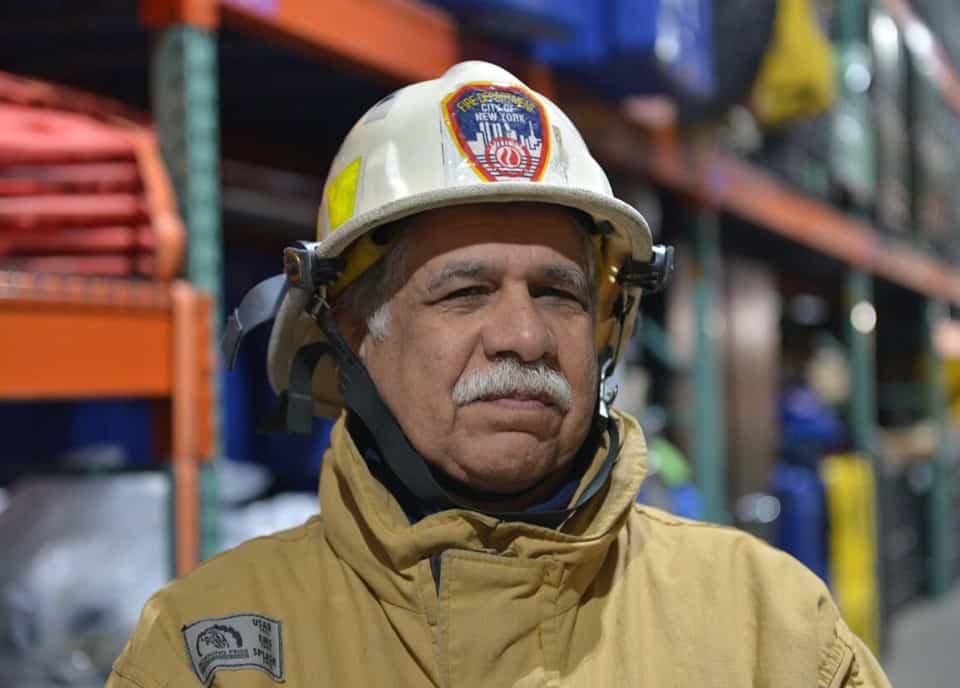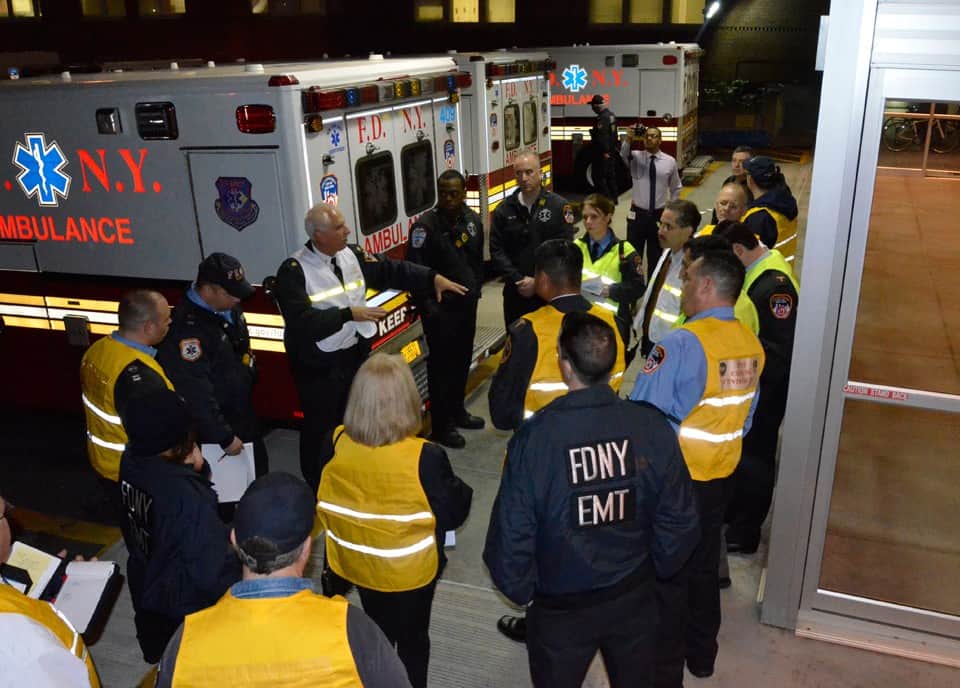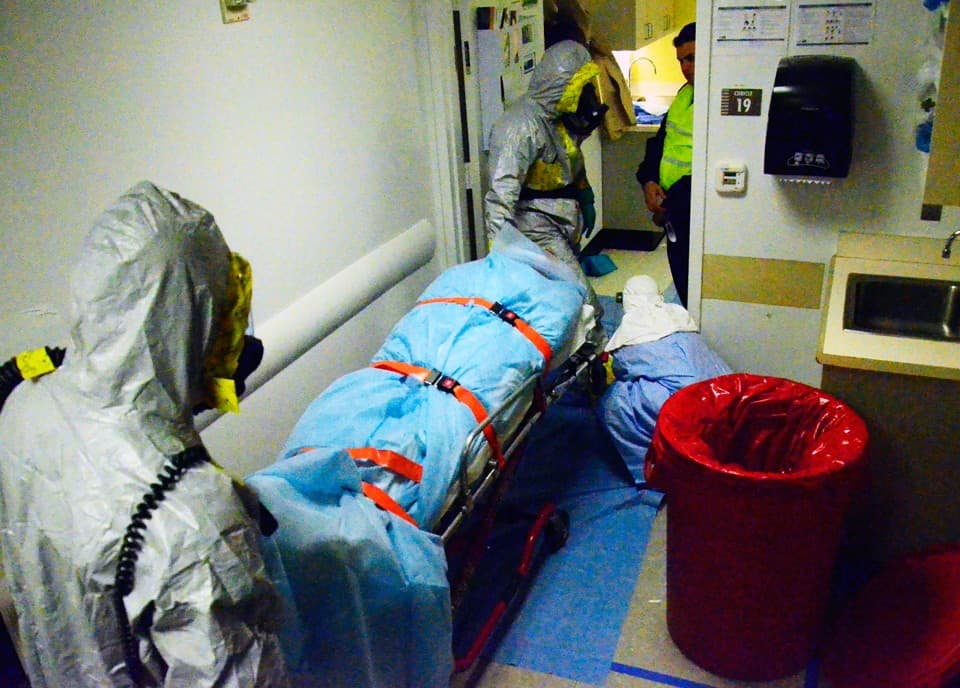In August 2014, Fire Commissioner Daniel A. Nigro formed a task force, under the direction of Chief Medical Officer Dr. David Prezant, to develop protocols for response, care and transport of patients with Ebola virus. Beginning in September 2014, FDNY responded to numerous cases and performed admirably despite the known life-threatening risk of contagion to […]
Accurate triage is the most critical component of any Emergency Medical Service (EMS) system. Miscommunications can prove detrimental to a good patient outcome. The assignment receiving dispatcher gathers the caller’s information, which then is consolidated into a useful format for the responding units. At the FDNY Bureau of Communications (BOC) Public Safety Answering Center (PSAC1). […]
Reviewing the proper procedure for donning and doffing infectious control ensembles is always a top priority for patient care providers. But, as the Department prepared for the potential spread of the Ebola Virus Disease (EVD), the need to ensure health and safety of members could be felt more acutely. The EMS Academy re-released long-standing procedures […]
The citizens of New York City know that when they call 911, the best-trained, most diligent medical professionals will arrive at their door. It is due to the attentiveness and organization of the Bureau of Fleet Services that these trained professionals have the ability to reach those callers in a timely and effective manner. Fleet […]
In October 2014, while operating as car 523, I was assigned to a multi-dwelling residence in Upper Manhattan, along with a Haz-Tac BLS, an ALS, one Conditions Officer and a Haz-Tac Officer. On arrival, I received a phone call from FDNY EMS Operations personnel, stating that the patient was a doctor who recently had returned […]
I recently had the honor of conducting the first One on One interview for our new FDNY Pro Podcast with a colleague of mine. As our Office of Medical Affairs (OMA) physician, long-time FDNY employee Dr. Dario Gonzalez is responsible for medical protocols, training, field response and quality assurance reviews. He is also the FDNY […]
Before anything else, preparation is the key to success. –Alexander Graham Bell, Inventor On October 23, 2014, local health officials identified the first case of Ebola in New York City. A physician working for Doctors Without Borders had returned from Guinea, where he had been treating Ebola patients five days earlier. All eyes then turned […]
In August 2014, Fire Commissioner Daniel A. Nigro formed a task force, under the direction of Chief Medical Officer Dr. David Prezant, to develop protocols for response, care and transport of patients with Ebola virus. Beginning in September 2014, FDNY responded to numerous cases and performed admirably despite the known life-threatening risk of contagion to […]
Accurate triage is the most critical component of any Emergency Medical Service (EMS) system. Miscommunications can prove detrimental to a good patient outcome. The assignment receiving dispatcher gathers the caller’s information, which then is consolidated into a useful format for the responding units. At the FDNY Bureau of Communications (BOC) Public Safety Answering Center (PSAC1). […]
Reviewing the proper procedure for donning and doffing infectious control ensembles is always a top priority for patient care providers. But, as the Department prepared for the potential spread of the Ebola Virus Disease (EVD), the need to ensure health and safety of members could be felt more acutely. The EMS Academy re-released long-standing procedures […]
The citizens of New York City know that when they call 911, the best-trained, most diligent medical professionals will arrive at their door. It is due to the attentiveness and organization of the Bureau of Fleet Services that these trained professionals have the ability to reach those callers in a timely and effective manner. Fleet […]
In October 2014, while operating as car 523, I was assigned to a multi-dwelling residence in Upper Manhattan, along with a Haz-Tac BLS, an ALS, one Conditions Officer and a Haz-Tac Officer. On arrival, I received a phone call from FDNY EMS Operations personnel, stating that the patient was a doctor who recently had returned […]
I recently had the honor of conducting the first One on One interview for our new FDNY Pro Podcast with a colleague of mine. As our Office of Medical Affairs (OMA) physician, long-time FDNY employee Dr. Dario Gonzalez is responsible for medical protocols, training, field response and quality assurance reviews. He is also the FDNY […]
Before anything else, preparation is the key to success. –Alexander Graham Bell, Inventor On October 23, 2014, local health officials identified the first case of Ebola in New York City. A physician working for Doctors Without Borders had returned from Guinea, where he had been treating Ebola patients five days earlier. All eyes then turned […]


